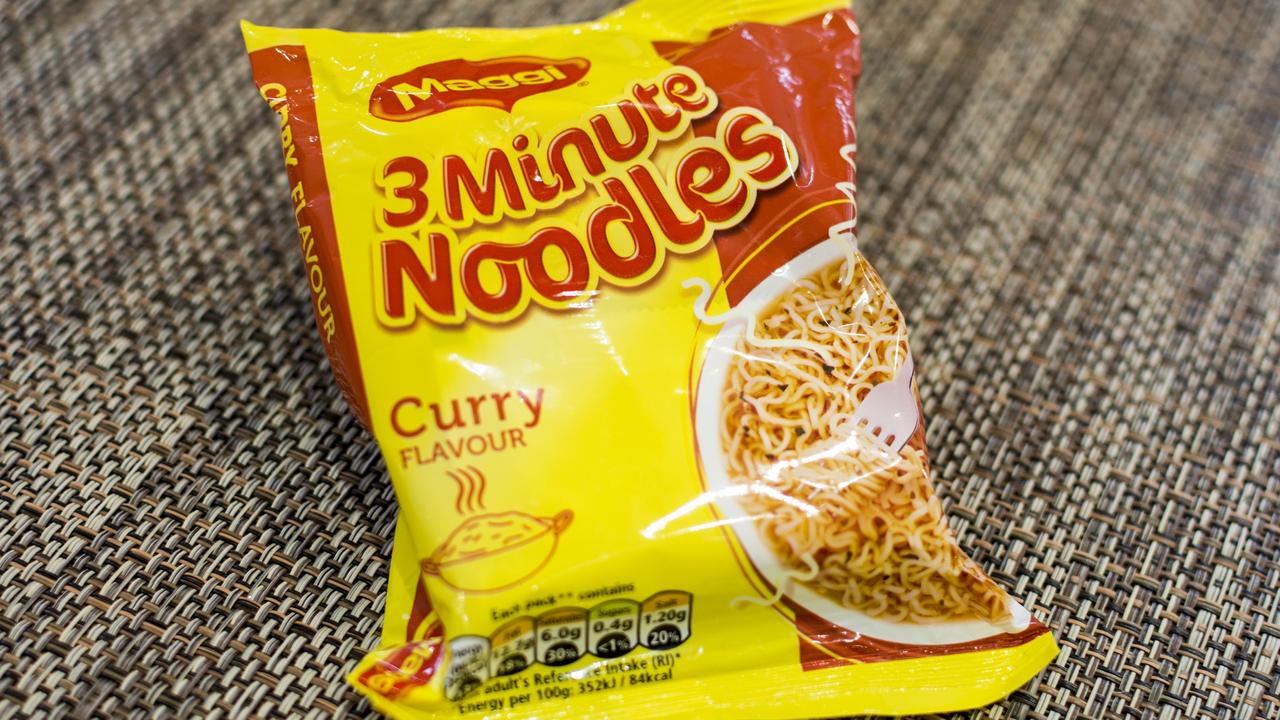‘Instant noodles’: Aussie families eating like uni students with ‘struggle meals’ on the rise
Australian families are increasingly eating like “uni students” with “struggle meals” of instant noodles as cost-of-living pressures grow.
Australian families are increasingly eating like “uni students” with “struggle meals” of instant noodles or cereal, as cost-of-living pressures leave millions with no room left to cut in the household budget.
Nearly half of Australians have a hard time affording enough groceries to last the entire week, according to a Finder survey of 1049 respondents.
One in five said they sometimes have to make do with fewer groceries, while 14 per cent said they occasionally need to get creative with meals to make them last.
Around two-thirds said they have a common “struggle meal” they go to when they are low on money, with instant noodles and leftovers topping the list, followed by toast, breakfast cereal, plain noodles and plain rice.

“Struggle meals are not a new thing but it’s families now that are thinking, ‘How can I feed my children on a budget?’, and they are adopting the same tactics as uni students who typically have very little money,” said Finder money expert Rebecca Pike.
“But these are people probably with full-time jobs that have income coming in, or even single households that are relying on pesto pasta.”
According to Finder’s Consumer Sentiment Tracker, the average Aussie household reported spending $190 per week on groceries in August.
But this figure was much higher for households with at least one child under the age of 18, at $251 per week.
Behind mortgage and rent payments, surveys show the price of groceries remains one of the top drivers of cost-of-living pressures for households.
“We’re seeing it get worse and worse, obviously we’ve seen inflation, wages haven’t kept up and interest rates have risen,” Ms Pike said.
“Australians feel like they’re being pulled in so many different directions where their money needs to go, and everything feels like a necessity.”
She added that many had already cut back virtually all discretionary spending, with groceries typically one of the last areas to be affected.
Ms Pike said the comparison website’s research showed a “sharp increase” in the number of Australians citing groceries as one of their most stressful expenses.

“People having their card declined at the checkout, these people are not still spending money on their Netflix subscription or gym membership,” she said.
“They’re literally spending every dollar of their paycheque on bills and groceries.”
She offered a number of tips for those struggling, such as planning meals around “predictable” supermarket sales cycles, stocking up on non-perishables when they are at their lowest price, and making the most of whatever fresh produce is in season and hence cheaper.
She said it was important to remember not everything on sale was a bargain, as “some are incentives to make you buy more than you need”.
Other deals may make higher-end products cheaper relative to their normal price, but there could still be private-label or other alternatives which are just as good, she added.
Official figures show pressure on grocery prices has eased for the past year-and-a-half.
Annual food inflation eased to 3.3 per cent in the June quarter, down from 3.8 per cent in the March quarter and the peak of 9.2 per cent in December 2022, according to the ABS.
More Coverage
The headline inflation rate rose to 3.8 per cent in June, up from 3.6 per cent in March and well above the Reserve Bank’s target of 2-3 per cent.
NAB’s consumer sentiment survey for the June quarter also found consumer stress rising again.
“While expectations for further increases in cost of living have become entrenched, consumers continue to adjust to these recurring challenges by taking greater control of household budgets, cutting spending in most areas,” NAB said.






